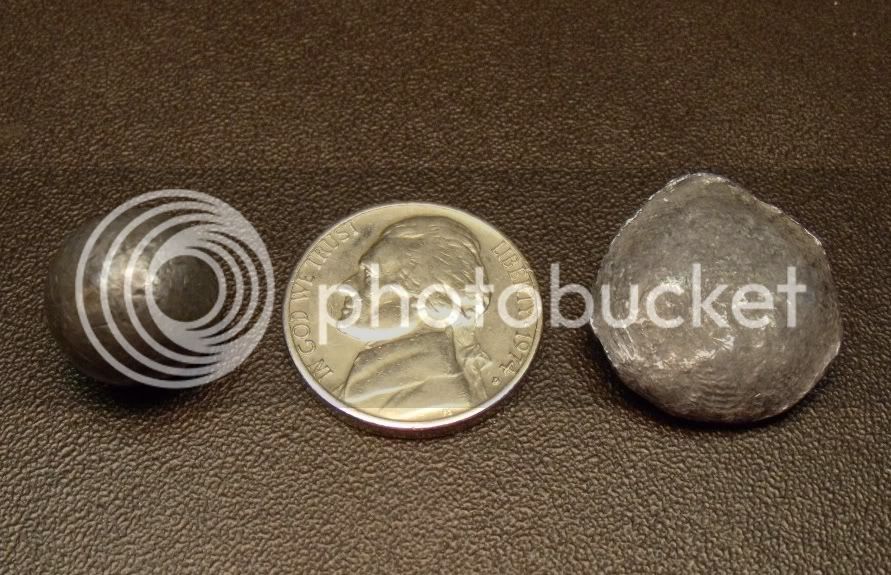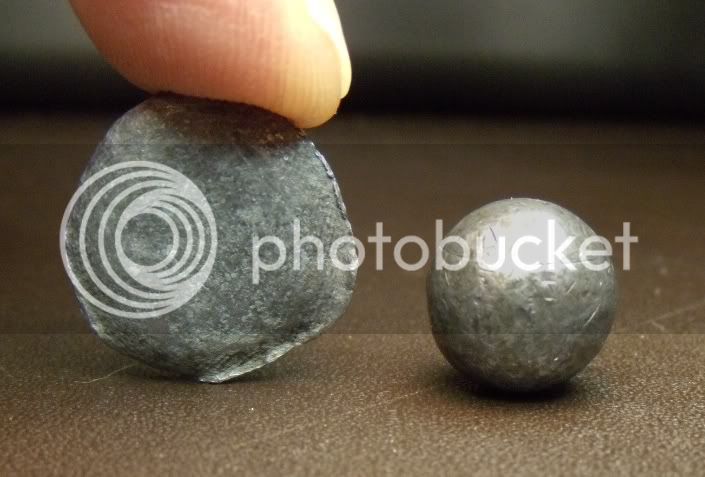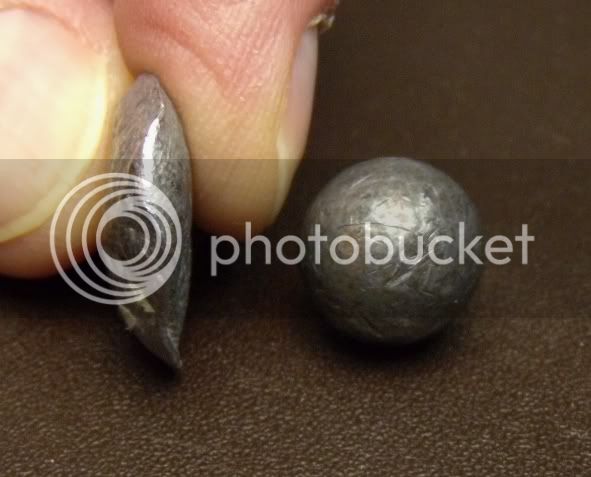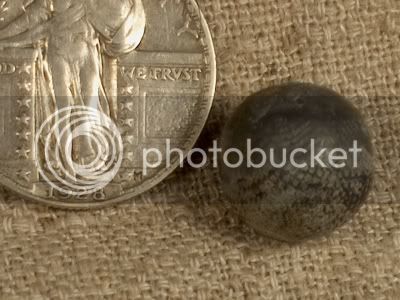- Joined
- Aug 15, 2008
- Messages
- 427
- Reaction score
- 388
A big RB will kill at long range and the closer you get the better it works. I prefer to hear someone brag "Knocked him flat!"




General Colbert... I remember the name because of that clueless moron on TV.Norinco said:Thomas Plunket killed a French general at anywhere between 200-600 yards with a Baker Rifle (granted that is a belted ball). He followed up that shot with another one, showing it wasn't pure luck.

It's very hard to imagine that a ball would flatten as much when hitting flesh as it would when hitting a phone book. Doesn't make sense.OneGun said:This seems like a good place for a picture showing how the lowly, 100% lead roundball flattens out and gets really big as it travels through an unlucky animal (or Redcoat). The pictures below are of a 54 cal. ball that I shot into a big stack of telephone books at 40 yards.
Enter your email address to join: